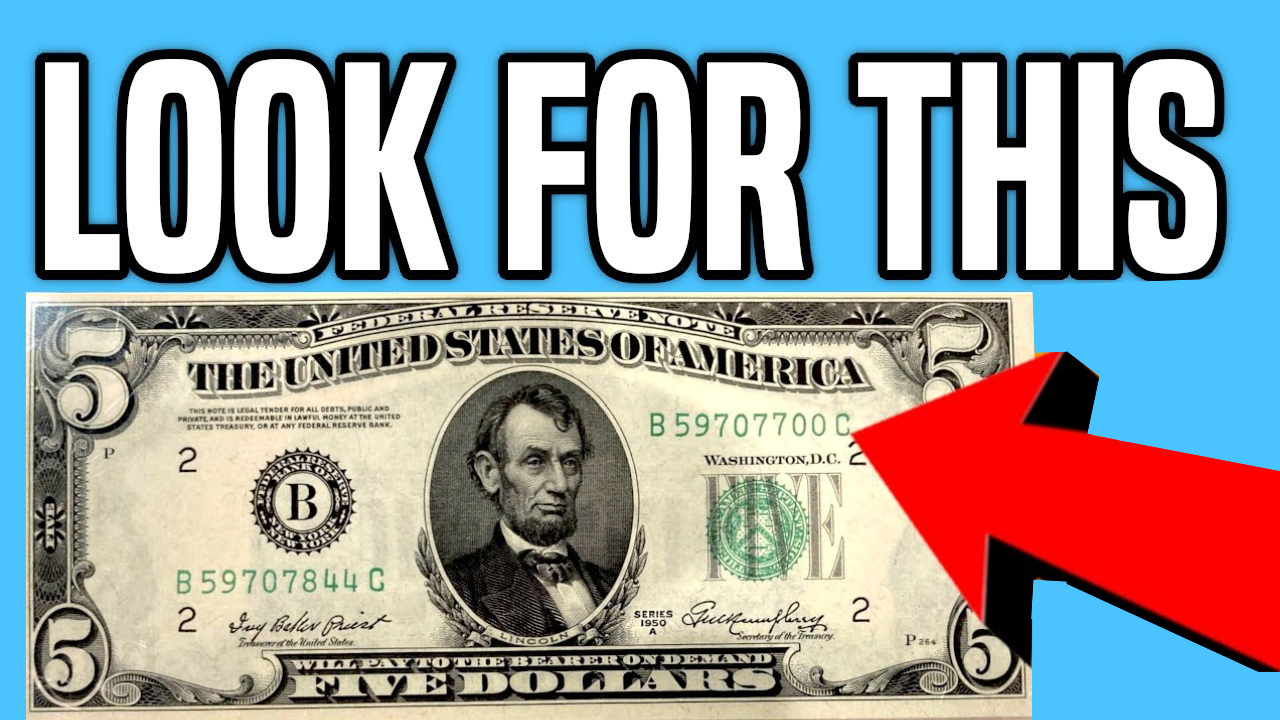A rare $5 bill might not seem like much—but what if it’s worth $4.5 million? That’s the buzz in the world of currency collectors, where a rare serial number can turn an ordinary piece of paper into an extremely valuable collectible. A particular type of note has been making headlines lately: radar serial numbers—and more specifically, a note with the number 31000.
It may seem unbelievable, but collectors are willing to pay huge sums for certain patterns. So, how can a five dollar note be worth millions of dollars? And how do you know if you have one? Let’s figure it out.
What is a radar serial number?
A radar serial number is a type of “fancy” serial number that looks the same forwards and backwards—just like a palindrome. Think of it like words like “level” or “racecar”—when reversed, it’s the same.
- 1234321
- 01133110
- 300003
These are all radar numbers—and are highly prized by collectors because of their rarity and attractive design.
Why serial number 31000?
Serial number 31000 has attracted attention because:
- When filled with zeros (i.e., 00031000), it becomes a tiny radar that reads the same forward and backward.
- It is conveniently located among small, symmetrical numbers that are often considered extremely collectible.
- Rumors in the numismatic world are that a $5 bill bearing this radar serial was sold or valued among private collectors at $4.5 million—a possible record for a modern small denomination note.
Although such sales are rarely documented (and often held in private collections), similarly rare notes in excellent condition and with unique serial numbers have fetched six- and even seven-figure prices at auction.
Why is it worth millions?
Here’s why a radar serial number like 31000 (or variations of it) can command such a high price:
- Rarity: There are only a limited number of palindrome combinations possible across all notes and denominations.
- Simplicity and symmetry: Small, clean numbers like 00031000 are particularly appealing to collectors because of their visual perfection.
- Lower denominations: Fancy serial numbers on $5 notes are much less common and more recent than those on $1 or $100 notes.
- Condition: A clean, uncirculated (considered “gem” or higher grade) note increases the value of the note sharply.
- Market demand: The number of serious currency collectors has increased, and high-net-worth individuals are looking to invest in rare physical assets.
How to check your $5 bill
- Look at the serial number
The serial number is printed twice on the front of the note, usually in green ink. You’re looking for:
- Palindrome or radar pattern
The number 31000 specifically or something like 00031000
- 2. Check for padding zeros
Serial numbers are usually 8 digits. So a radar serial like 31000 will appear on the bill as 00031000.
3. Check the series and condition
- Look for newer series like 2006, 2013, or 2017, though older series can also be valuable.
- The bill should be unissued, with no folds, tears, or wear.
4.Note any stars (★)
- A star note—a replacement bill with a star instead of a letter at the end of the serial—can increase the value significantly.
What to do if you have a note
If you think you’ve found a $5 note with a radar serial number like 00031000:
- Don’t spend it. Put it aside immediately.
- Protect it with a currency sleeve or holder to preserve its condition.
- Have it appraised by a professional grading service like PMG (Paper Money Guarantee) or PCGS Currency.
- Contact rare currency dealers or auction houses for appraisals or listings.
Final Thoughts
It’s not every day that a five dollar bill becomes worth millions—but in the world of rare serial numbers, anything is possible. Serial number 31000, especially in radar or padded form, might be one of those once-in-a-lifetime finds.
So the next time you break twenty dollars or get change back from the store, take a close look at your five dollar bill. A small pattern of numbers could make you a millionaire overnight.
Do you think you see a radar serial number on your bill? Write the number down and I’ll help you figure out what it’s worth!

